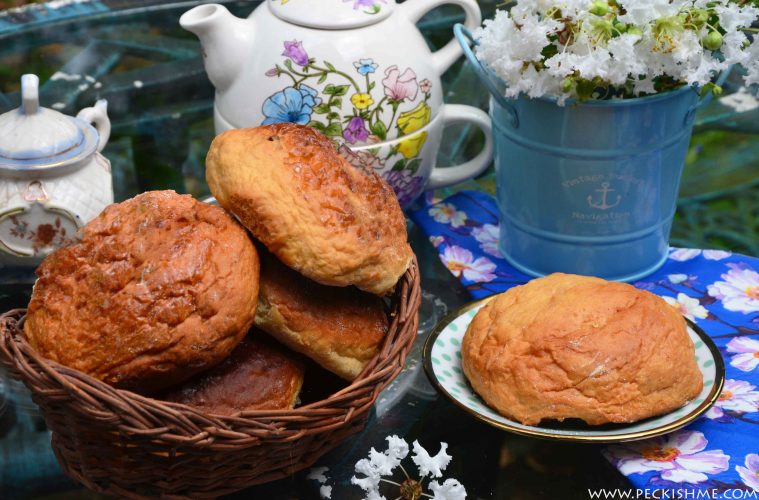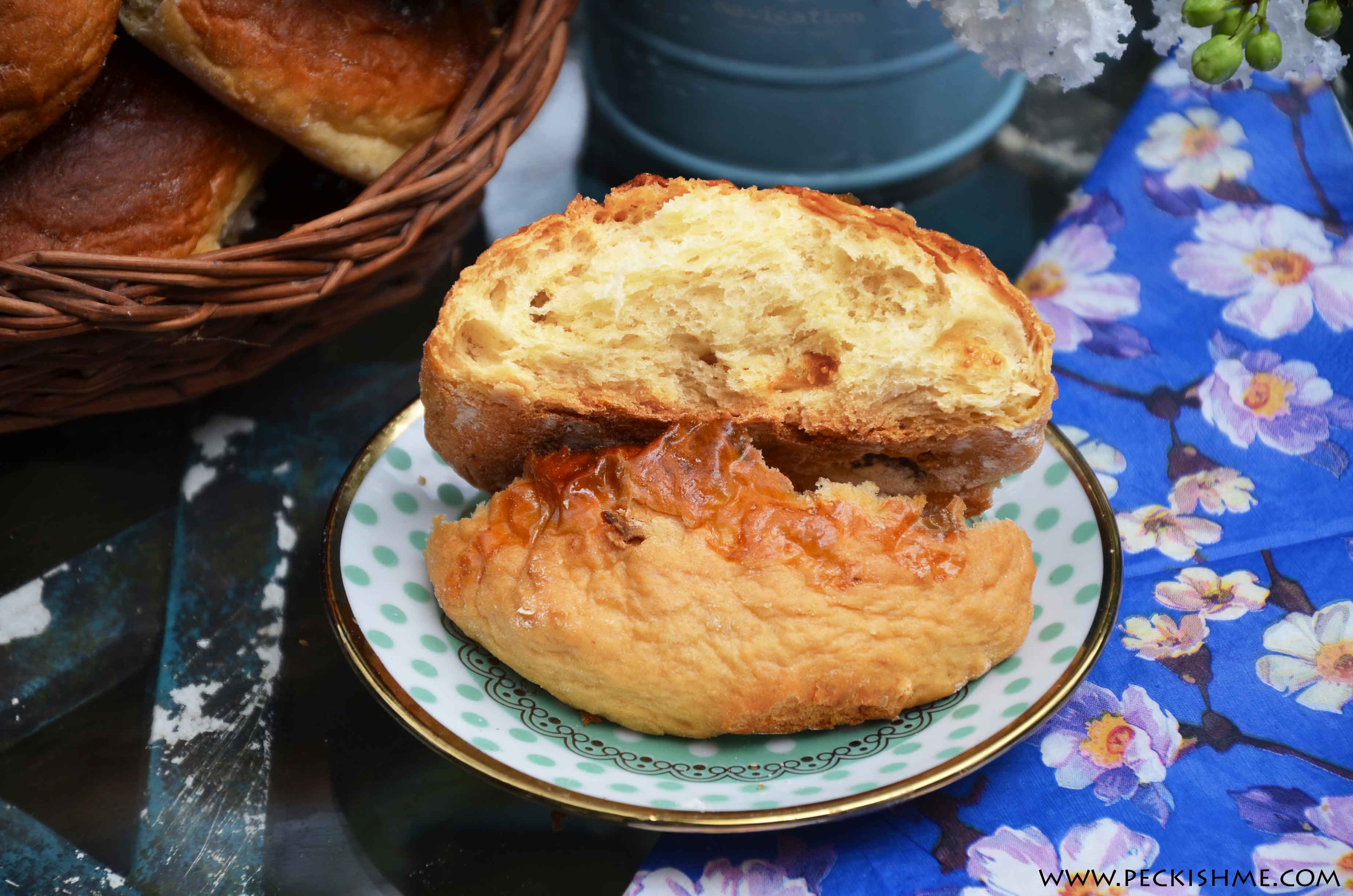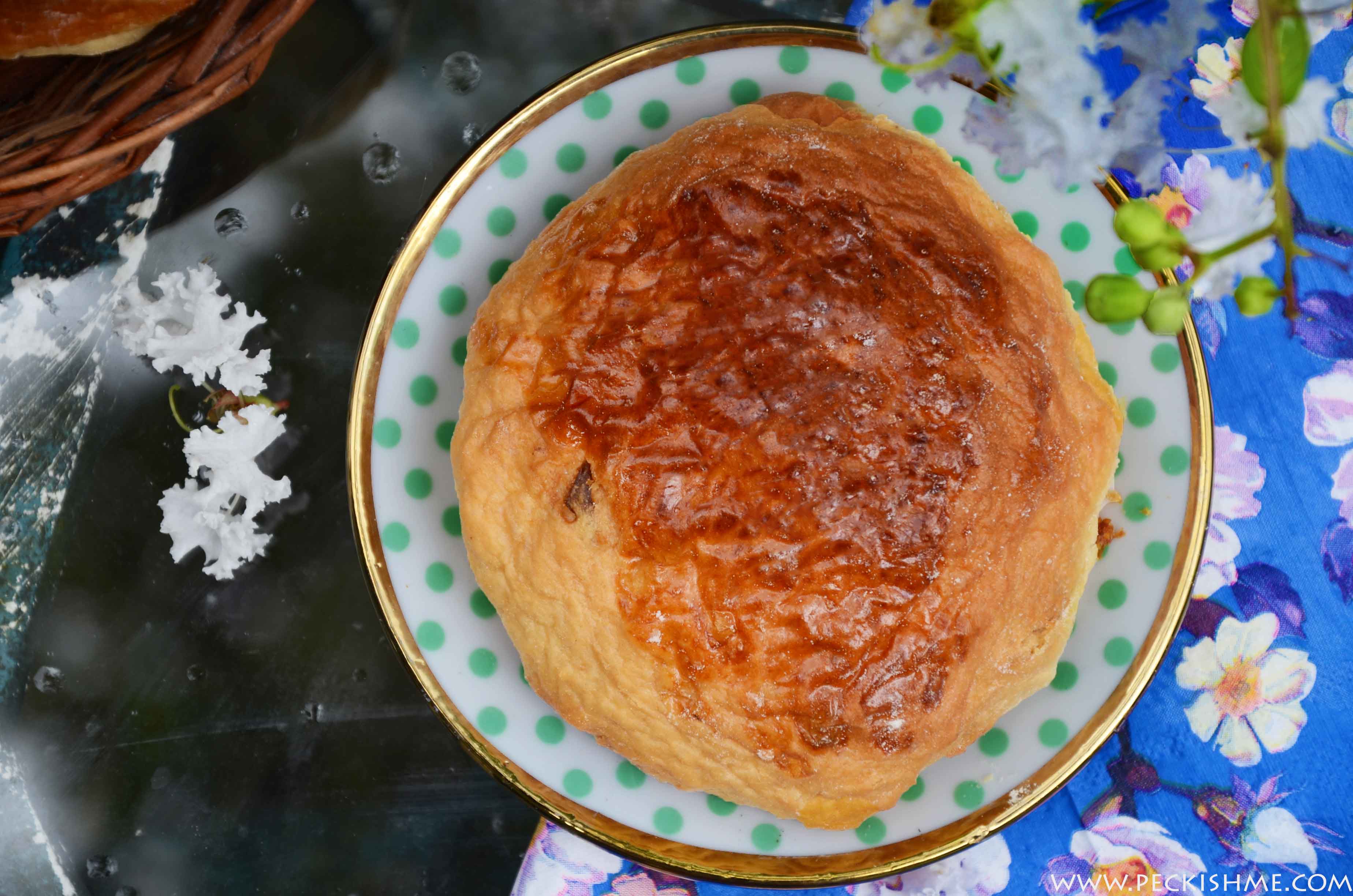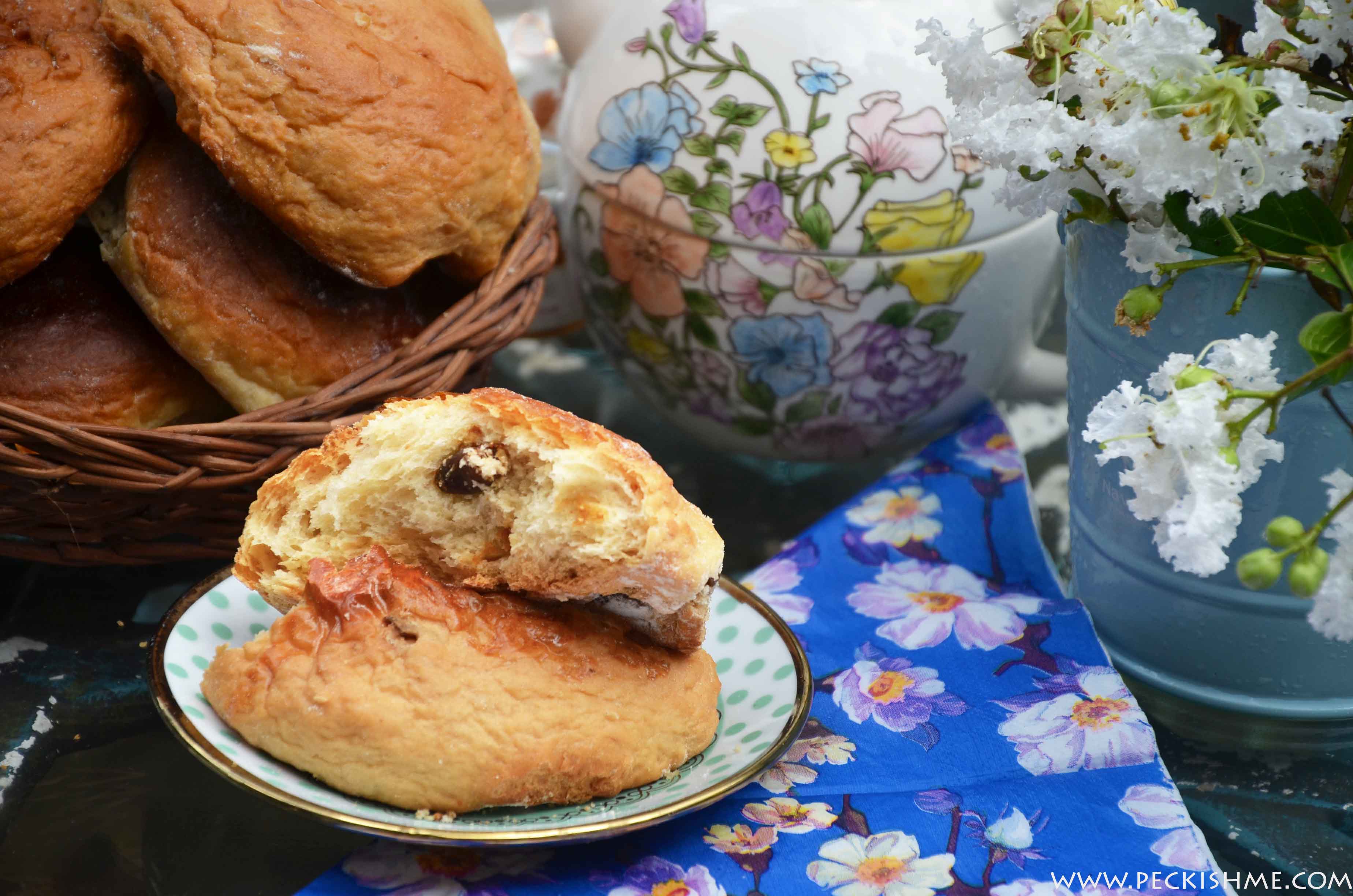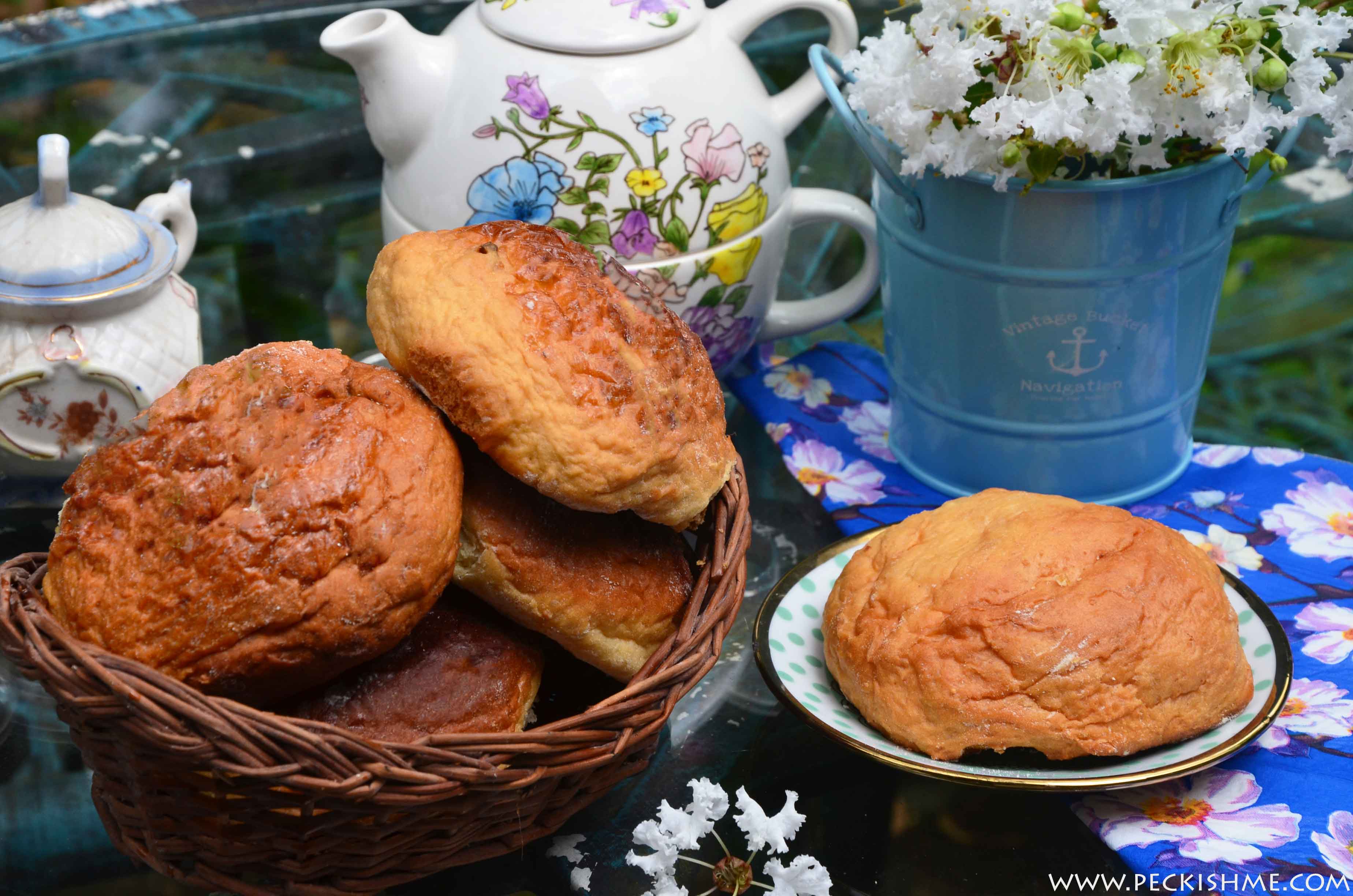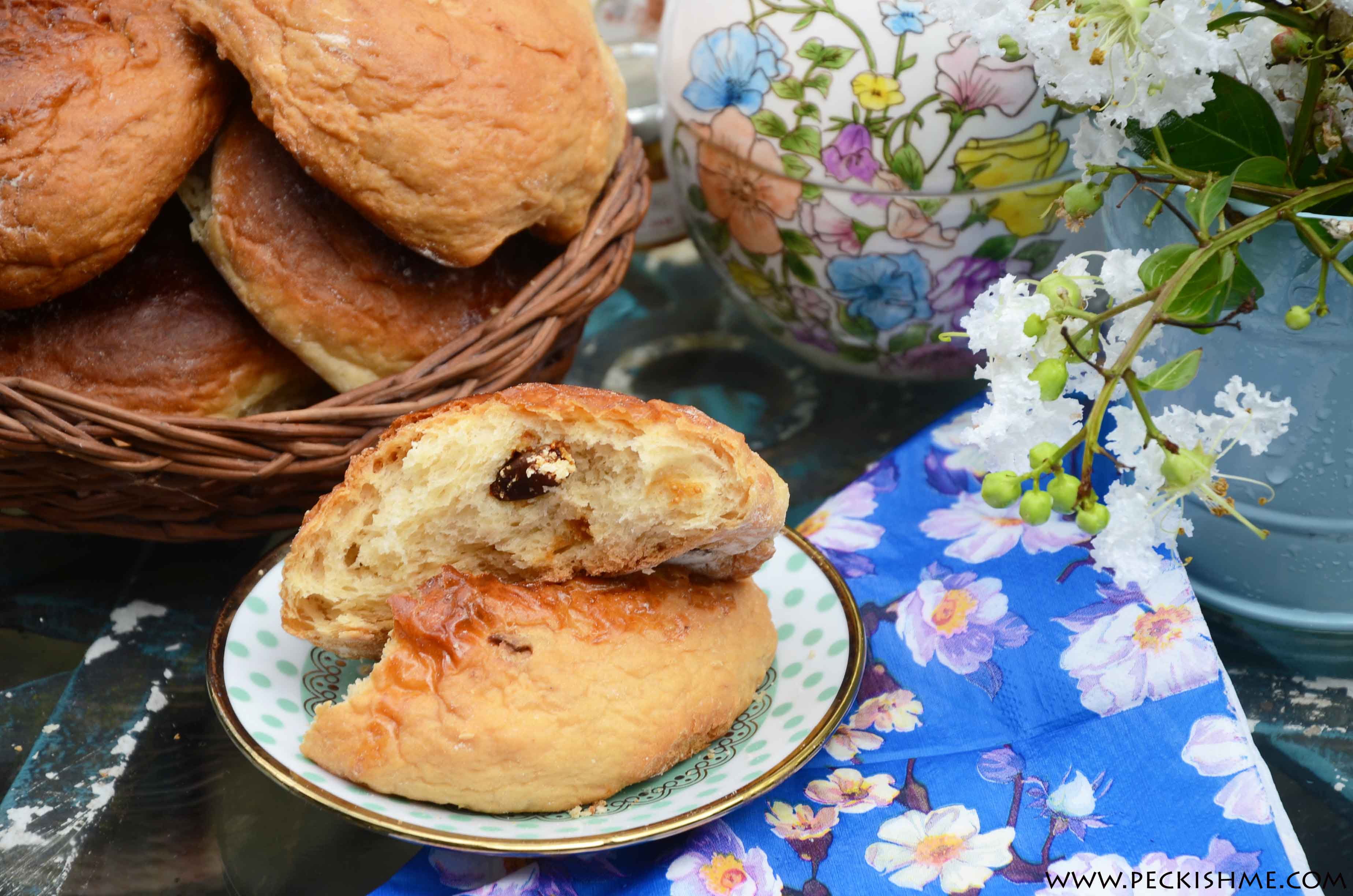It’s 4 o’clock and the smell of freshly baked bread, roast paan, kimbula banis and tea banis emanating from our neighborhood bakery would wake us gently from our afternoon naps, and we would stagger and stumble out of bed, squeezing the last dregs of sleep out from our eyes. This is the cue for our fathers in their sarongs and tshirts to leisurely walk down the block with loose cash jingling in their hands, their noses led by the promise of warm, inviting bready things to have with tea, basking in the golden syrupy glow of the setting sun.
It is this very habit that whenever my father visits a bakery, however upscale and fancy it is, the one thing he picks up is the Sri Lankan tea bun.
It doesn’t matter what fine and elaborate item is there, from amongst the marzipan frosted cakes, the buttery bacon and egg pastries, the funky chicken cornets, luscious fish buns, bulging mutton rolls and crunchy fish rolls, my father always picks the humble Sri Lankan tea banis and walks home happily, very much content with his choice.
Soft and feathery, this cloud-like creation is dotted with raisins amidst a lightly sweet interior and is the perfect accompaniment to afternoon tea. Priced at just LKR 20 or so, this is often the cheapest of the lot and is such a part of the Sri Lankan culture that during the Sinhala and Tamil New Year, there are competitions on who can eat a Sri Lankan tea bun suspended in the air by a thread the fastest with the contestants’ hands tied behind their backs.
Living far away from your birth country can make you crave for all kinds of homely comforts. And whenever I am out of the country, the tea banis is one of those things that I crave for too. So for all those suffering from the same malediction, I hope this recipe will be a solace and will provide the release that they need and satiate their craving for a taste of home sweet home.
I’ve long since wanted to try my hand at making these and I finally got around to doing it just recently. However, the ultimate test was the stamp of approval from our in house tea banis connoisseur – Daddy Dearest. While being delighted with the thought of a homemade version of his favourite bakery item, he was a little skeptical at our ability of reproducing it. But as it went, he liked it! I think my stamp of approval came when the items started disappearing no more than an hour since they came out of the oven and I couldn’t be happier!
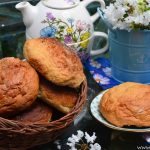
Sri Lankan banis
Ingredients
- Flour - 500g
- Milk - ½ cup, warm
- Water - ½ cup
- Butter - 80g, softened
- Egg - 1
- Egg yolk - 1
- Salt - 1 tsp
- Sugar - 100g
- Active Dry Yeast - 1 packet (2 ½ tsps.)
- Raisins - ½ cup
Instructions
To make Tangzhong
- Combine the water and 25g of the flour together in a saucepan. Whisk well so that there will be no lumps.
- Simmer on a low heat until it thickens and forma runny paste.
- Leave to cool for about 1 hour.
To make the dough
- Mix warm milk, half the sugar and yeast together in a bowl. Leave aside for 5-15 minutes until it froths.
- In another bowl, mix together the butter, the rest of the sugar, flour, egg and egg yolk. Add to this the yeast mixture and the Tanzhong.
- Mix well until the dough comes together either with a dough hook or with fingers. If the dough seems a little dry, add a little milk one tablespoon at a time.
- Knead for about 10 minutes. Dough should be soft, smooth, a little sticky (slightly sticks to your finger when touched but finger comes off clean) and a little shiny once it is done.
- Add the raisins. Knead for about 5 more minutes.
- Cover the bowl with plastic wrap and set aside in a warm place for at least 1 hour.
- Once the dough has properly risen, turn it out on to a floured surface and divide it into 10 portions. Form them into balls and place them on a greased and lined baking tray. Cover and let rise for about 1 hour.
- Preheat oven to 350 F. bake for about 15 minutes until the buns have risen and are golden brown on top.
These buns are best when eaten warm. Not like you can resist when it smells so wonderliciously good!
Beautifully soft and cloudlike in texture, the fluffy interiors are speckled with raisins which somehow get all plumped up in the oven. It’s literally like chewing slightly solid cotton candy and once in a while you will encounter a juicy raisin which will go ‘plop’ in your mouth and flood your senses with a dainty sweet-sour. Faintly milky and definitely lovely, the mellowness of these light and refreshing buns complement any hot beverage extremely well – although we almost always have ours with tea. I sometimes also split these up, slather some butter and jam in the middle and eat it as a sandwich – butter and a good sprinkling of sugar goes a long way as well. Or just break off a piece and dunk it in your tea.
Although Daddy Dearest likes his with a ripe banana. No need for embellishments really – it is rather delicious on its own as well.
Baking tips
- TangZhong is a bread making technique that was developed in China while some say that it was originated from Japan. Anyway the point being, TangZhong is considered as the Asian secret to soft and fluffy bread that stays soft and fluffy even days afterwards. During the cooking, the starches in the flour gelatinizes and the mixture thickens and when this is added to a bread mixture, the dough softens up considerably.
- You can use this or not use it – it’s completely up to you. However, using TangZhong will help you keep the bread softer for longer.
- You can sprinkle some sugar on top of the buns if you want. I somehow avoid this as this tends to darken the buns. I had to learn it the hard way as I brushed the top of my buns with a little beaten egg and the tops browned more than I would have liked :(
Have you liked my Facebook page yet? Do show some love by liking it!
Pin my recipes up on Pinterest. Follow my boards too if you like!

